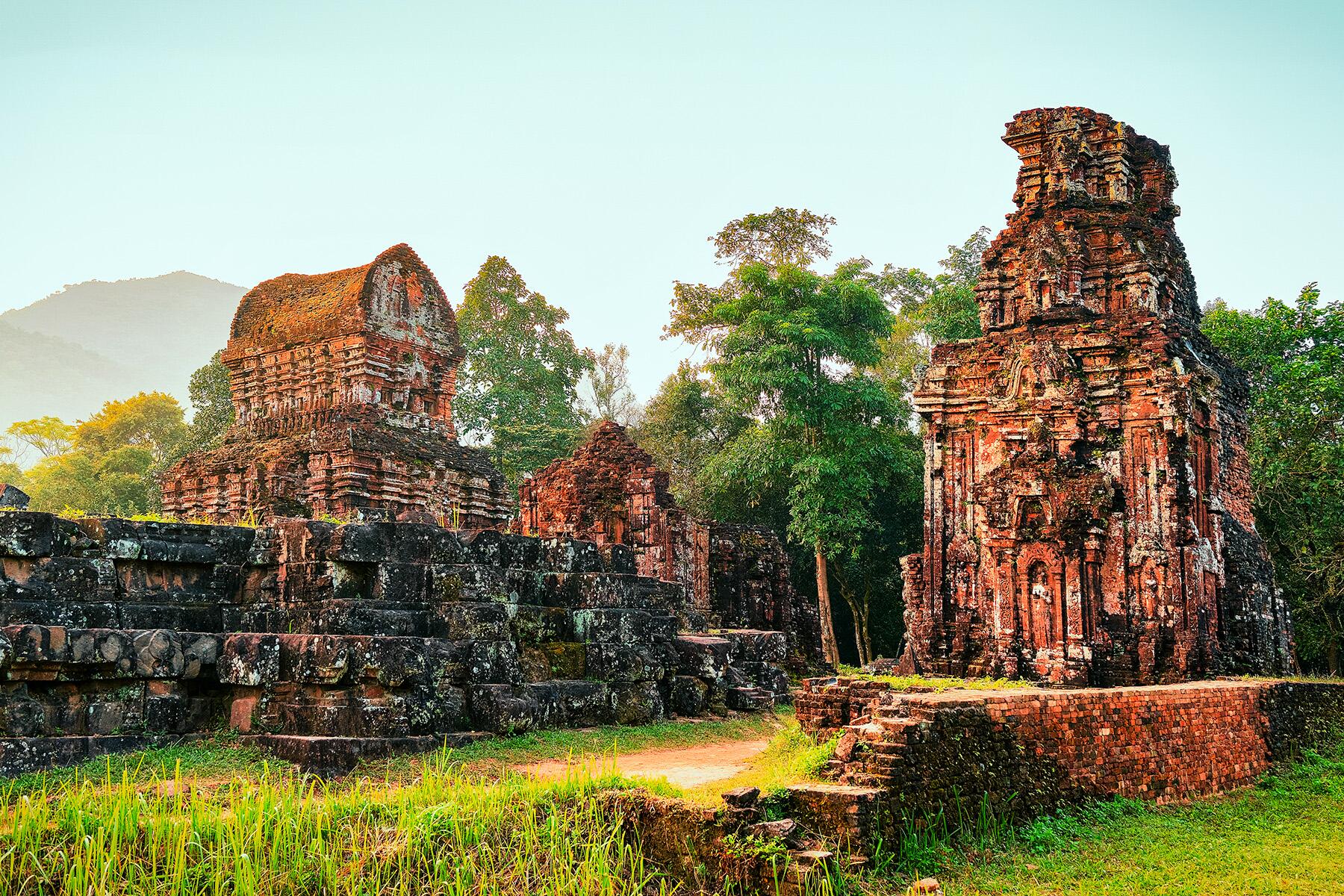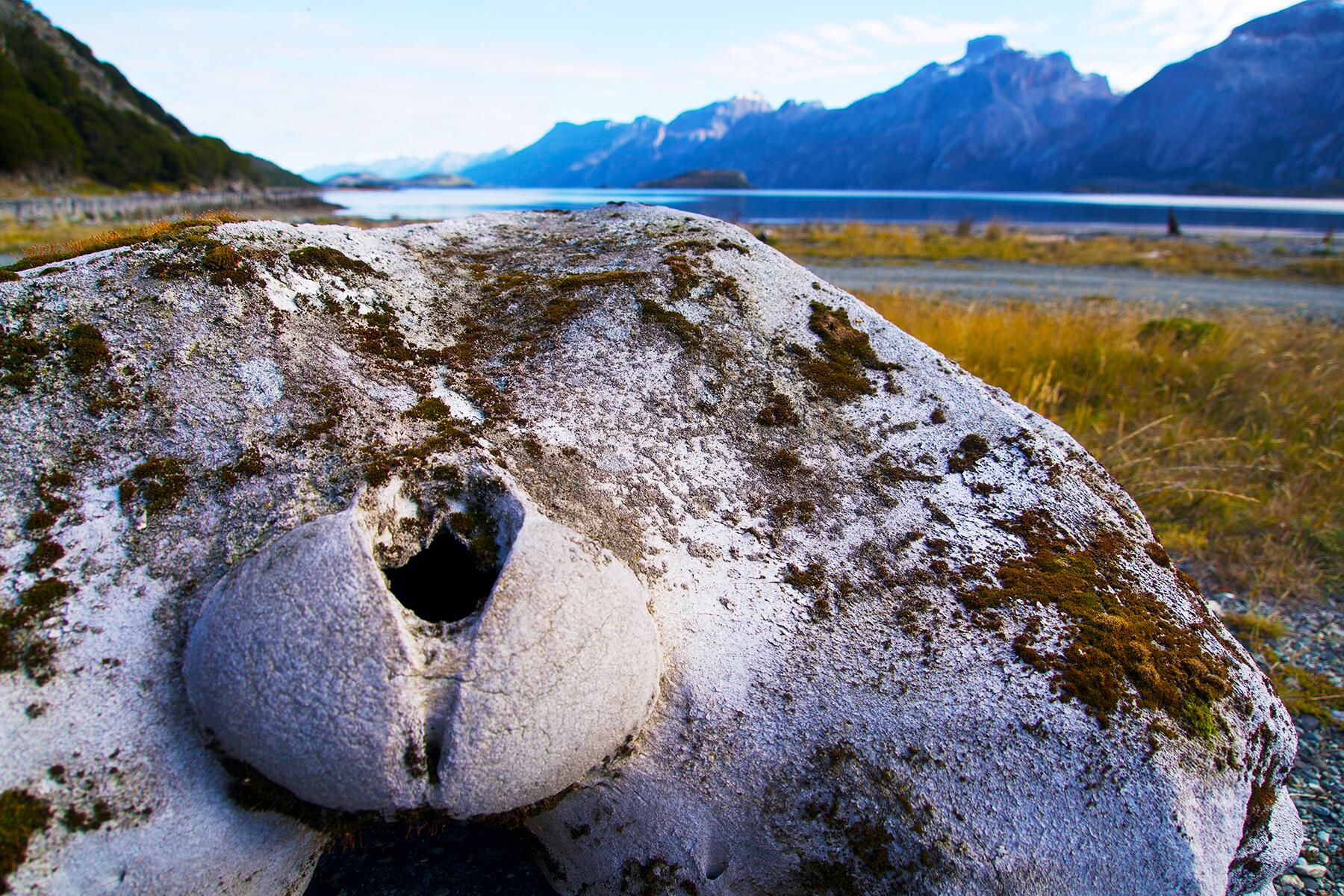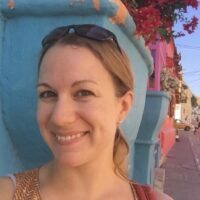An Indigenous Chilean population fights to exist and have their history acknowledged.
Driving south through Tierra del Fuego, I was getting an idea of how vast this place is. On a map, the island doesn’t look very big, curving east at the southern tip of South America. The line dividing it between Chile and Argentina makes the Chilean side look even smaller.
It had been four hours since I’d seen a town, or even a gas station, crossing endless plains of short bunchgrass dotted with guanaco. This wild cousin of the llama once sustained the Indigenous Selk’nam people who lived here. Suddenly, mountains rose from the plains, and forests began to replace the bunchgrass. Narrow valleys filled with red peat bogs, and glaciers increasingly covered the peaks as I pushed south.
I was glad I had stopped at the Rusque Municipal Museum, also known as the Provincial Museum of Tierra del Fuego (also the tourist office), in Porvenir for information before setting out to see how far my rental car could get. Museum docent Nicole Velázquez Ruiz was incredibly helpful and recommended I take a 20-liter gas can.
“There are no services south of Porvenir,” she warned me. “You can’t get lost, because there’s only one road, but it’s not paved.”
Velázquez Ruiz was one of several friendly islanders who welcomed me with endless generosity. I had come back to Tierra del Fuego to learn more about the people of the island, past and present.
Recommended Fodor’s Video
I was eager to start south, but Velázquez Ruiz said I should see the new exhibit about the Selk’nam people. In 2019, the museum exhibit I saw echoed history books that the Selk’nam people were victims of genocide from which there were no survivors. The 1890s genocide is widely recognized as being perpetrated by European colonizers and their then-Chilean descendants who had come to the island to mine for gold and start sheep ranches. The 2022 exhibit acknowledges the history that is still not commonly accepted in Chile: there are living descendants of the Selk’nam people. Curious, I set out to learn more about the Selk’nam people. Everybody I met suggested more people to speak with, which is how I eventually made contact with Hema’ny Molina Vargas and Marcela Comte Calderón.
In 2015, Molina Vargas organized a small group known as the Corporación del Pueblo Selk’nam. The objective was to find other descendants of the Selk’nam people.
“Growing up, history books said that the Selk’nam were extinct. I knew my grandmother was Selk’nam, so I thought she must have been the only one to survive the genocide,” said Comte Calderón. “I thought I was the only Selk’nam still alive.”
“We all felt that way before we found each other,” agreed Molina Vargas.
She now serves as president of the rapidly growing community. Scattered up and down the length of Chile, the Corporación del Pueblo Selk’nam is fighting for recognition from the Chilean government. They want to be incorporated into law 19.253, which protects the rights of Chilean Indigenous groups, including the Yagán and Kawéskar, who are from the same region of Chilean Patagonia.
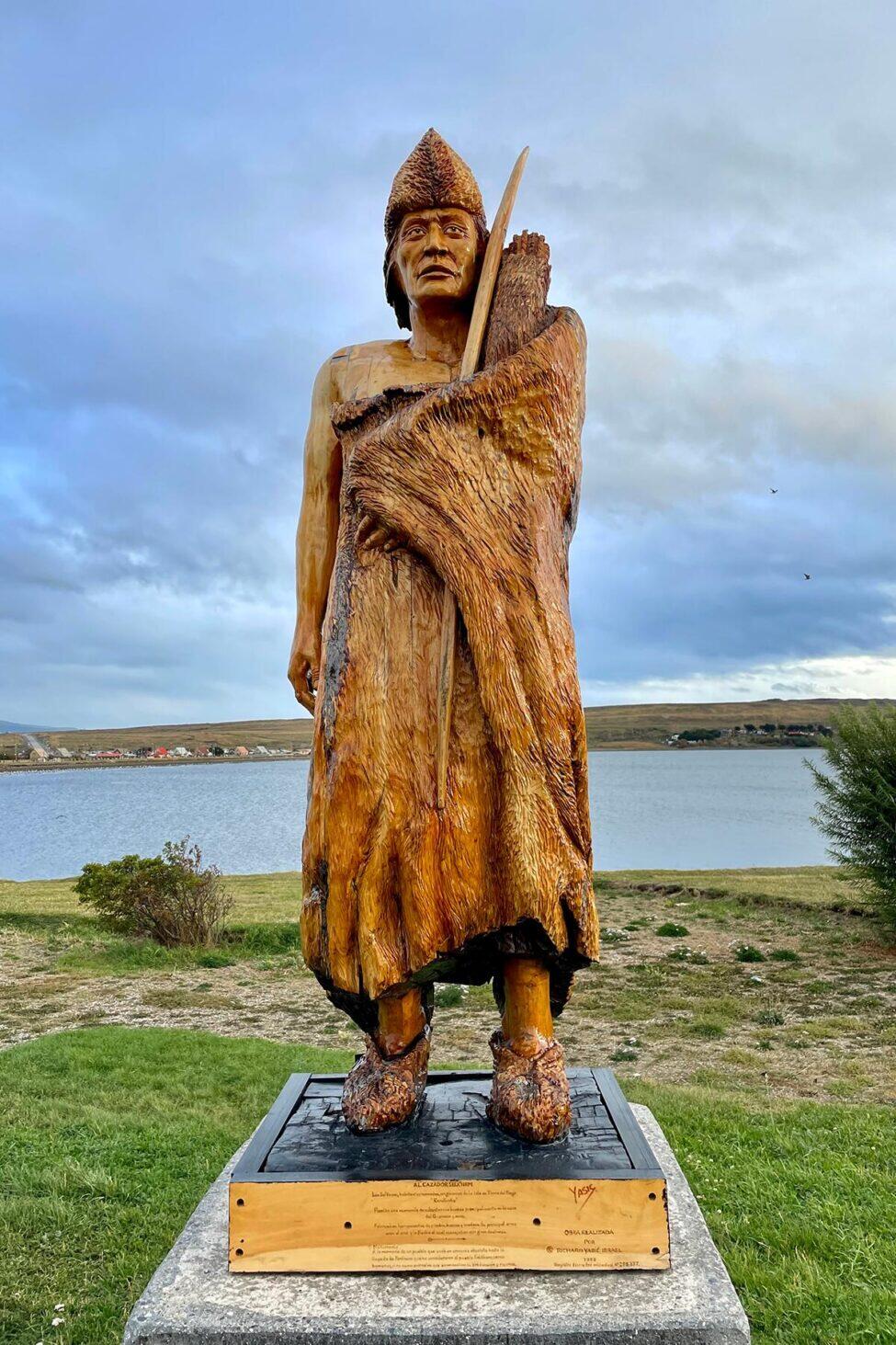
The Selk’nam people once lived on almost every part of Tierra del Fuego, which they originally called Karunkinka. The Spanish name of the island comes from what the Europeans saw as they sailed by: the island’s seemingly spontaneous combustions. In fact, these controlled fires were used by The Selk’nam people to communicate. When European ships sailed near the island, they would burn the nearest hillside to warn others of the approaching foreigners.
Perhaps partly for this reason, Europeans rarely set foot on Tierra del Fuego between 1520, when Ferdinand Magellan first sailed by, and the late 1800s. Chile won independence from Spain in 1818, and Chileans set out to map every bit of the land. One of the last places they went was Tierra del Fuego. In 1881, the first gold miners arrived on the island. Two years later, the Chilean government started to award land grants to gold miners and sheep ranchers on Tierra del Fuego, many of whom were recent European immigrants. According to Chilean historian Mateo Martinić Beroš, only 23% of sheep ranch employees between 1894 and 1899 were Chilean. The majority, 77%, came from other countries, and 58% of those came from England.
The Selk’nam people didn’t need maps of the land where they had lived for 12,000 years. All the history I had read about the Selk’nam people before this most recent visit to the island had outlined the cultural practices of what the authors deemed an extinct people. This “extinction” was caused by a brutally thorough genocide of the Selk’nam in the 1880s and 1890s, mainly by the miners and ranchers, but including conflicting accounts of an organized militia hunt by Romanian Julius Popper.
Many Selk’nam men were murdered for hunting the sheep that were suddenly crossing their lands. The murders escalated when sheep ranching companies, most of which were incorporated in England, started to offer one pound Sterling for the head of any Selk’nam person. In 1895 an official census declared that only 1,500 Selk’nam remained alive. In the next five years, at least two hundred more were murdered, and the remaining 800 to 900 (official figures are vague) were taken from Tierra del Fuego and confined to a Salesian mission on Dawson Island. Twenty years later, the mission closed, leaving only a cemetery. The Chilean government declared the Selk’nam “extinct.”
N
ow here were Molina Vargas and Comte Calderón, living proof that the Selk’nam are alive today. Before the Corporación del Pueblo Selk’nam could petition for recognition from the government, they had to show that they did, indeed, exist.
In early 2022, researchers from Universidad de Magallanes and Universidad Católica Silva Henríquez completed a study to evaluate the claim. The study assessed the language, anthropology, archeology, and the documented and oral histories of people who self-identify as Selk’nam. When presenting their findings, the researchers corroborated Molina Vargas and Comte Calderon’s affirmations and supported their petition for recognition.
Looking at the content of the study, I asked Molina Vargas why genetics were not considered.
“Genetic tests aren’t specific enough for us yet,” she replied. “A test can show that I am indigenous to Patagonia, but it can’t say if I am Selk’nam, Yagán, or Kewéskar.”
The petition could take years, but is meaningful beyond just tribal recognition. The Selk’nam would be protected under Law 19.253 as a people with rights to their heritage, language and a possible path toward reclamation of their lands.
In the meantime, if you travel to Tierra del Fuego, know that you are on the ancestral lands of the Selk’nam people. Even if the government recognizes the Selk’nam people, widespread recognition will likely take years of educating the local population, and pushing publishers, institutions, and others to revise their work accordingly.
T
he Karunkinka Natural Park, created in 2004 and administered by the Wildlife Conservation Society, is not waiting for the government. They are actively working to educate themselves and their visitors about the Selk’nam people. Guides are learning the Selk’nam language and history from Molina Vargas and others. The name Karunkinka is the Selk’nam word for “our land.” Most importantly, according to Comte Calderón, the park is not appropriating images of Selk’nam spirits.
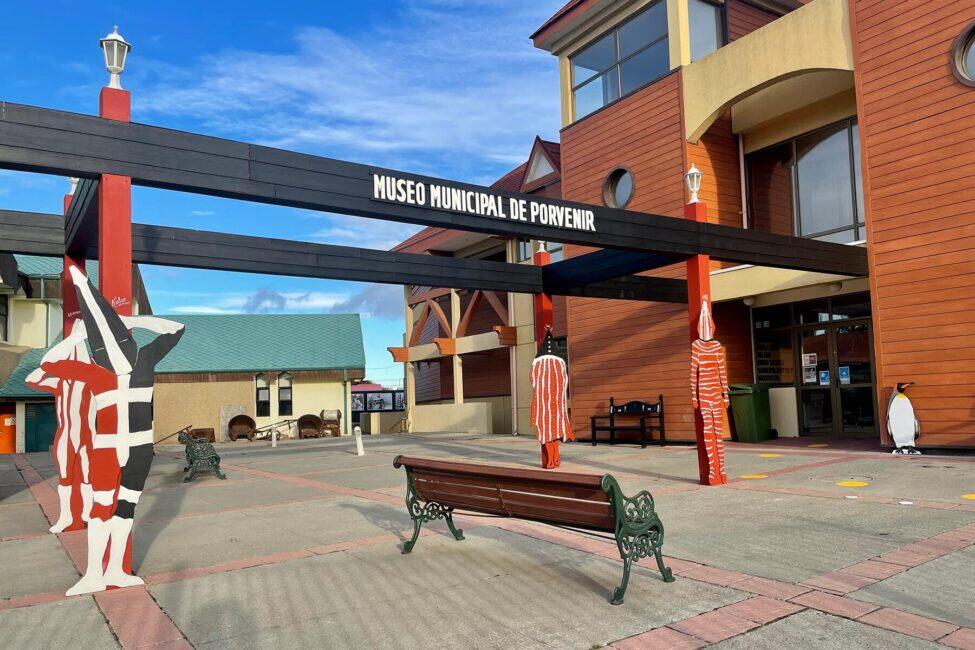
Travelers to Patagonia often see images of Selk’nam spirits on everything from souvenir mugs and t-shirts to company logos and public art. Unfortunately, the people coopting these images are appropriating them from the Selk’nam people without understanding or consent.
“For us, it’s horrible to see our spirits for sale,” explained Molina Vargas. “Our spirituality is not a myth or a legend, it’s part of our families and our way of being. People don’t understand that, but when we have protection from law 19.253, we will have legal recourse. As long as we are not recognized, our spirits are not protected, and people can do whatever they want.”
I admit I fell into this trap the first time I visited Tierra del Fuego. I bought a lovely pair of earrings inspired by the Selk’nam spirit Tanu. But since my conversations with Comte Calderón, I now know it’s disrespectful to wear them (complicating matters, disposing of such souvenirs would also be disrespectful). I asked what souvenirs could be sold that wouldn’t be so problematic.
“What represents us more is our seashell art and basket weaving,” said Comte Calderón. “Art made with the red, white, and black pigments our ancestors painted themselves with, our patterns of dots and lines, that can be sold. Our spirits should not be visible, but the animals of our land do express our culture. Guanacos, flamingos, owls, and whales are symbolic for us.”
The beauty of Tierra del Fuego goes beyond the glowing blue glaciers and penguin colonies. It’s the future of the Selk’nam people of Tierra del Fuego who continue to fight for the Indigenous culture and peoples on the ancestral lands of this extraordinary island.
“When a whale beached itself, it was shared with everybody, because we were not alone,” added Molina Vargas. “There were the Kawéskar and the Yagán. Everything was shared. That is what should be taught about our people.”


